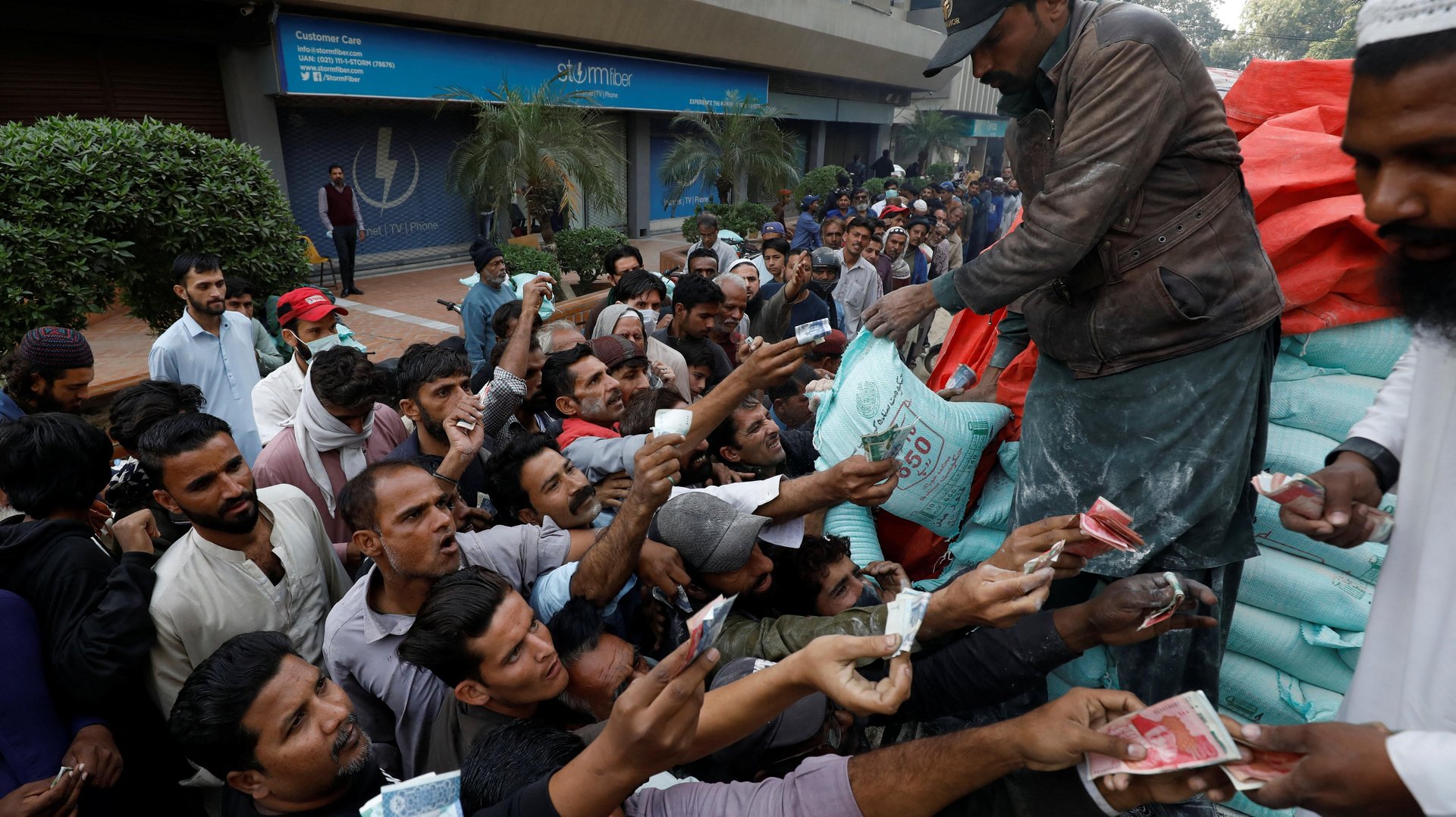Why is Pakistan teetering on the brink of default?
Pakistan's forex reserves are not enough to cover even a month of imports

Over the past several months, Pakistan has faced a crisis similar to Sri Lanka’s, with a weak currency and the highest-ever inflation rate. Things may be reaching a flashpoint now.
Home to 2.8 million people, India’s neighbor is on the verge of bankruptcy amid deep political instability. Devastating floods between June and August 2022, compounded by the global economic turmoil sparked by the Ukraine war, have precipitated a disaster that has been in the making for many years.
Faltering GDP growth had made it difficult for Pakistan to service debt of $274 billion, which was nearly 79% of Pakistan’s GDP as of September 2022.
So bad is the situation now that the country has put up its embassy building in the US on sale. Its textile industry, accounting for around 60% of its exports, has come on a verge of closure. Shopping malls, wedding halls, restaurants, and markets have been asked to operate shorter working hours to conserve energy.
With the state unable to fund imports, containers of essential food items, raw materials, and medical equipment are held up at the Karachi port. Banks have refused to issue new letters of credit for importers.
Pakistan’s economic woes have historical roots—from dismal foreign direct investment to poor business climate to dysfunctional domestic energy markets and poor tax collection.
Pakistan’s depleting forex reserves
By Jan. 6, the country’s forex reserves had dwindled to $4.3 billion, the lowest level in nearly nine years. This wasn’t enough to cover even a month of imports, leave alone the more than $8 billion it has to repay in loans this quarter.
Over the past year, the Pakistani rupee has shed over 20% to trade at 228.75 per dollar (Jan. 16), making imports costlier. The currency’s decline accelerated in April when prime minister Imran Khan was ousted following a no-confidence vote.
Pakistan’s deepening debt crisis
Last year’s cataclysmic flood broke the proverbial back of the cash-strapped nation, which was already grappling with high debt. Pakistan’s agriculture, food, livestock, and fisheries sectors lost $3.7 billion in the catastrophe, according to a report by the country’s planning commission. Long-term losses were estimated at around $9.24 billion.
About half of the $7 billion loan, extended by the International Monetary Fund (IMF) in 2019, has already been disbursed. Now, especially with the Imran Khan government’s collapse, that deal has been put on hold since Pakistan has not taken measures to generate revenues enough for repayment.
Hyperinflation has sparked chaos on the streets
Pakistan recorded headline inflation of 24.5% in December 2022, double of 12.3% from a year ago. Onion prices have surged 501% year-on-year; staples such as rice, wheat, pulses, and salt now cost nearly 50% more than they did a year ago.
The worst-ever flour crisis is ravaging the country, with the Khyber Pakhtunkhwa, Sindh, and Balochistan provinces even reporting stampedes for the grain and flour. Balochistan’s food minister Zamarak Achakzai, last week, warned of worse as stocks of subsidized flour have been completely depleted.
Pakistan, the world’s 8th biggest producer of wheat, is now importing 75 lakh tonnes of it to plug the shortage.
“The priority should be to tame inflation through sound macroeconomic policies...to provide targeted relief to those hit hardest by rising prices, including through expanded social protection programs, and to address the distortions that discourage trade and productivity,” said Derek HC Chen, author of a World Bank’s report published on Pakistan in October.
There are other macroeconomic risks, too, that Pakistan must tackle: a large current account deficit, high public debt, and subdued demand in Pakistan’s traditional export markets.
A helping hand from the world
The Pakistan government has said it needs more than $16 billion over the next three years to rebuild infrastructure lost to floods.
Last week, several countries came together to pledge aid of $9 billion to it. The United Arab Emirates, besides rolling over $2 billion that Pakistan owes it, agreed to provide an additional $1 billion to help it avoid default.
However, this may not be enough. Prime minister Shehbaz Sharif has, meanwhile, attempted to break the deadlock with the IMF. It must be noted that IMF has bailed out Pakistan multiple times in its 75-year membership.